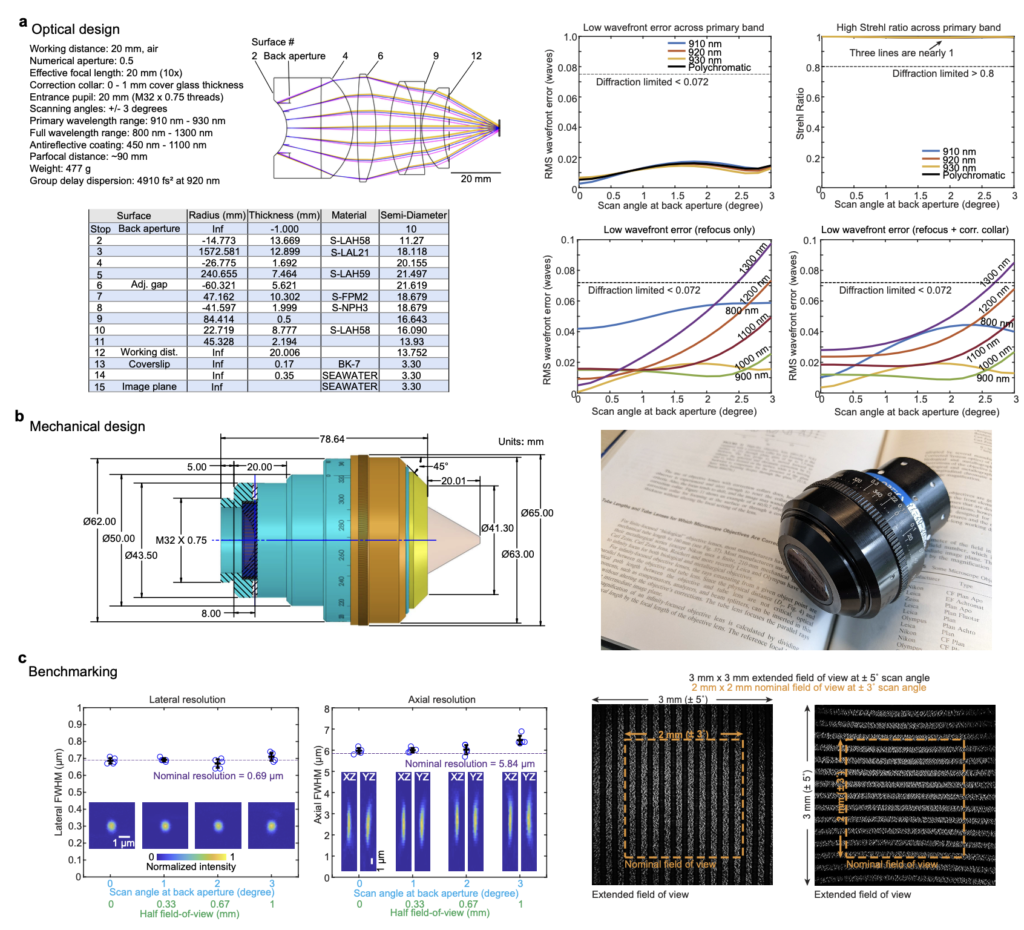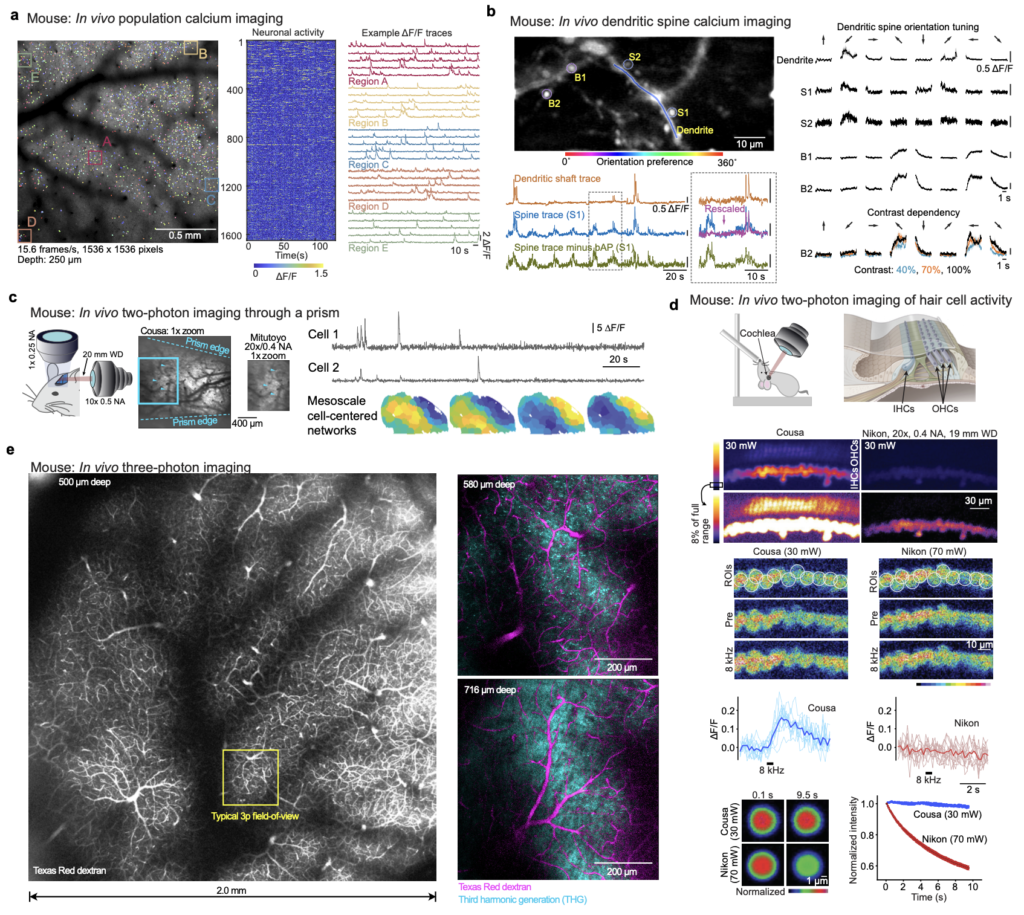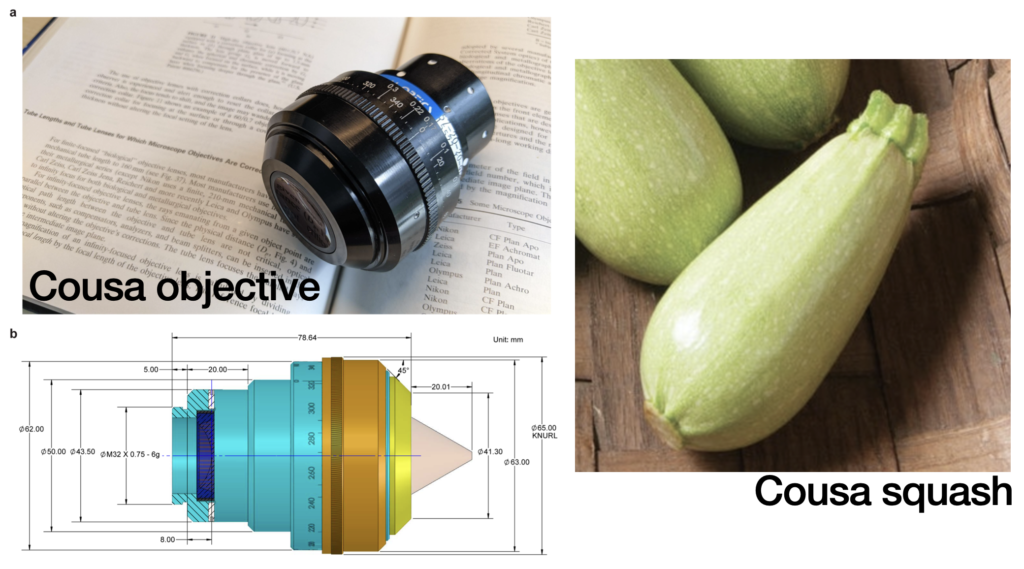The Cousa objective, an ultra long working distance, large field-of-view air objective for multiphoton imaging

We just updated the preprint for the Cousa objective. It’s a big update.
Back in November 2020, we announced a design for a 20 mm working distance objective optimized for two-photon imaging. I thought this would be a one-off project. We would do one round of fabrication, take results, write it up, and be done with it. Then, it took on a life of its own and now we have a massive manuscript with 28 authors, every single one of whom contributed data to the manuscript, using the Cousa objective. But I’m getting ahead of the story. Let me back up…
Our collaborator on the Nemonic project, Kristina Nielsen (JHU), came to us with a problem: it was difficult to use short working distance water objectives in larger animals such as adult ferrets and non-human primates due to mechanical constraints– the objective kept running into the sidewalls of the chamber, adjacent skull, etc. We went back-and-forth on the geometric constraints for a while.
Finally we just gave up. We couldn’t figure out how to fit an objective into the region.
Instead, we decided to move the objective up out of the way entirely. This way, we can use all of the available clearance for the light cone of focused and collected light. We would make a 20 mm working distance air objective, give it the longest focal length we could for a nice large field-of-view, and we would optimize it for 2-photon imaging of GFP-based indicators like GCaMP. It also had to work on conventional two-photon microscopes that neuroscience labs use: Bruker, Scientifica, Neurolabware, Thorlabs B-scope, Sutter MOM, etc. So we had to constrain the design to a back aperture of 20 mm diameter, and scan angles of +/- 3 degrees. And it needed to fit. It needed to be a plug-and-play, screw-on-and-go objective that would enable new experiments.
And so that’s what we designed. Che-Hang Yu designed it. We wanted to make a few, to keep the project economical, and some key early adopters bought into that first batch.

Then more people wanted it. So I coordinated another batch.
Then still more people wanted it, so I coordinated yet another batch. And as I’m writing this, I’m working on making yet more. I thought this would be a one-off project. I was wrong. The objective is having applications and impact that I never imagined. The revised preprint covers some of these. We show functional imaging in mice– both population imaging and spine imaging– plus imaging in ferrets, tree shrew, marmoset.
We also show functional imaging in cochlear hair cells in vivo, and two-photon imaging of the retina in the intact pig eye— both are unprecedented, as far as we know. We also do three-photon imaging with the Cousa, over the largest field-of-view that we are aware of.

The name comes from the funny shape of the objective. We had to break some design rules for microscope objectives. We ended up with an objective that is quite fat in the lower middle, like a cousa squash.

I am very grateful to everyone who has reached out to try it. I wish I could include all of the applications that it’s being used in. It’s tremendously gratifying to make something that lets fellow scientists do new things. We’re going to do some more of this!
Hi, I am extremely impressed by this design, it would be a very useful addition to our Bruker Ultima IV scope. (we study glioblastoma-related epilepsy in mice). If you happen to have any more for sale, I’d appreciate it if you could put me on the waitlist… TIA!
We’re working on it! Just sent off another file today.